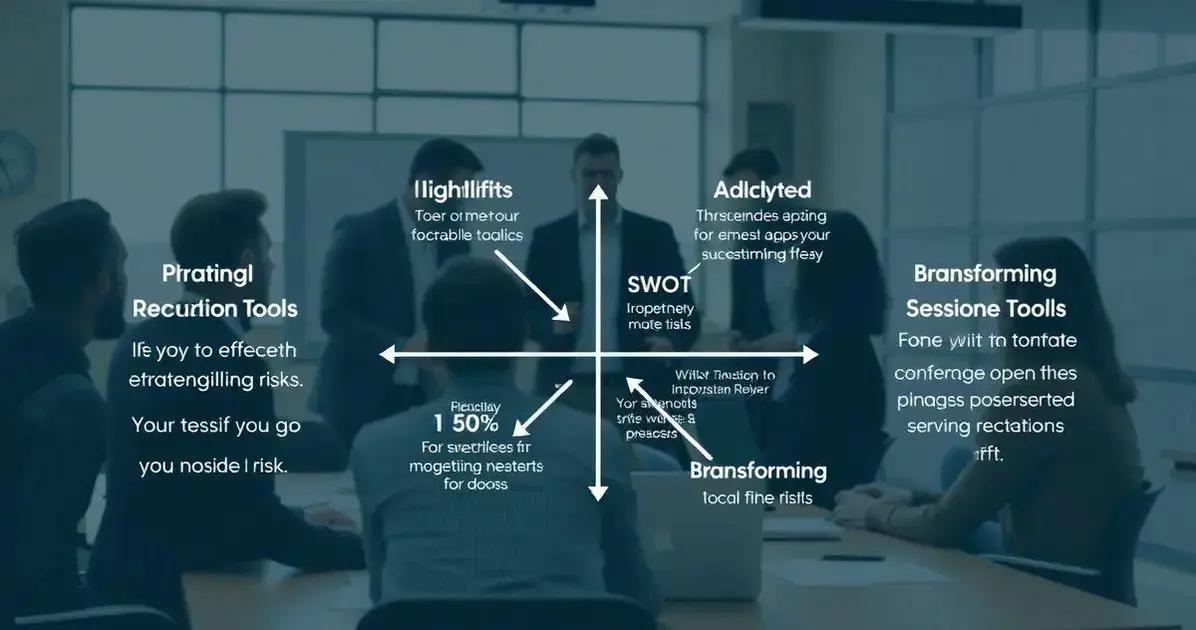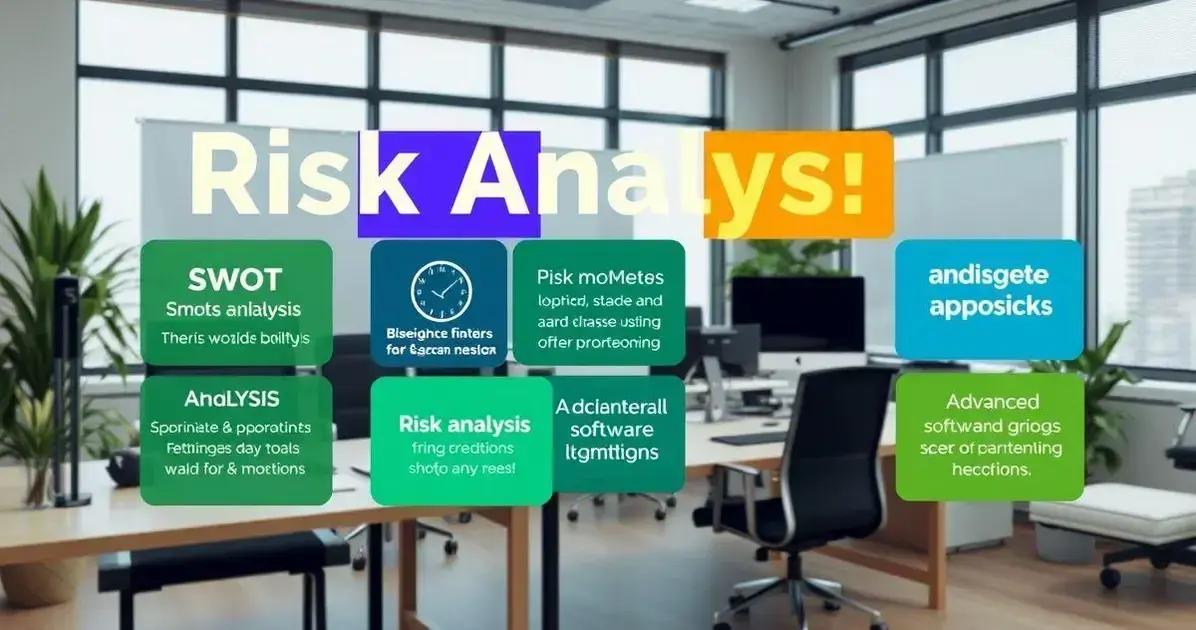Risk Management: Unlocking the Secrets to Confident Business Decisions
Advertiser
Risk management is essential for business success, covering identification to mitigation of potential threats. Utilizing effective strategies and modern tools ensures companies tackle uncertainties confidently, paving the way for informed decisions and growth in competitive markets.
In today’s rapidly changing business environment, **Risk Management** is crucial for success. By identifying potential risks early, companies can avoid costly surprises and maintain their competitive edge. This article discusses the fundamentals of Risk Management, the importance of identifying risks, effective strategies for mitigation, and the tools and techniques used in risk analysis.
Understanding Risk Management Fundamentals
Risk Management Fundamentals are crucial for any business aiming to succeed in an uncertain world. Understanding these basics helps managers prepare for potential challenges. At its core, risk management involves identifying, assessing, and prioritizing risks. Once identified, businesses can devise strategies to minimize or entirely avoid these risks. This process ensures that companies are not caught off guard by unexpected events.
Key Elements
There are several key elements to consider. First, it is essential to identify all potential risks. This can range from financial threats to operational hiccups. Once these risks are identified, assessing their impact becomes critical. Not every risk poses the same level of threat, so it is important to prioritize them accordingly. Finally, developing a response strategy is vital. This might include transferring the risk, like through insurance, or mitigation plans to reduce its impact.
Approaches to Risk Management
Several approaches can be taken towards risk management. A proactive approach involves anticipating risks before they occur, while a reactive approach deals with risks as they arise. The proactive approach is generally deemed more effective because it enables businesses to prepare in advance, thus avoiding potential disruptions.
Risk management is not a one-time exercise. It is an ongoing process that should be regularly reviewed and updated as new risks emerge. Companies that master these fundamentals can face challenges with confidence and agility.
The Importance of Risk Identification

The importance of risk identification cannot be overstated. It is the first step in a robust risk management process, serving as the foundation for all subsequent actions. Identifying risks early enables businesses to prepare effectively, thus avoiding potential pitfalls that could disrupt operations or finances.
Benefits of Early Identification
Spotting risks ahead of time allows for the development of strategic responses and resource allocation. Early identification ensures that companies have the necessary tools and plans ready to counteract any threats. This proactiveness minimizes damage and can even transform certain risks into opportunities.
Common Risk Identification Techniques
There are several techniques companies use to identify risks. Brainstorming sessions, SWOT analyses, and risk assessments are popular methods. Communicating with various departments and stakeholders can also help surface risks that might not have been initially obvious. These techniques ensure a comprehensive understanding of potential issues.
By making risk identification a priority, businesses can operate with greater confidence and agility. This proactive stance helps them manage uncertainties in a dynamic business environment.
Strategies for Effective Risk Mitigation
Developing strategies for effective risk mitigation is crucial in managing potential threats. These strategies serve to reduce the impact or likelihood of risks. The first step often involves risk avoidance. This means altering plans to evade specific risks entirely. When avoidance isn’t feasible, risk reduction comes into play, aiming to minimize the chances of risks occurring or at least their impact.
Transferring Risks
Risk transfer is another common strategy. It involves shifting the impact of a risk to a third party, such as through insurance or outsourcing. This strategy can help protect businesses from significant losses by ensuring financial coverage in risky situations.
Accepting and Monitoring Risks
Sometimes, businesses may choose to accept certain risks, especially if the cost of mitigation exceeds the benefit. In these cases, monitoring is key. Companies should continuously assess the risk landscape and make necessary adjustments to their strategies as conditions change.
Successful risk mitigation relies on a balanced approach. By employing a mix of avoidance, reduction, transfer, and acceptance strategies, businesses can navigate uncertainties with greater confidence.
Tools and Techniques for Risk Analysis

Using the right tools and techniques for risk analysis is essential in identifying and managing potential risks efficiently. Several quantitative and qualitative techniques assist businesses in evaluating risks. Quantitative techniques, like probability and impact assessments, help in numerically evaluating risks and predicting potential losses.
SWOT Analysis and Risk Matrices
A SWOT analysis is a common qualitative method, examining strengths, weaknesses, opportunities, and threats. It provides a structured way of identifying potential risks and their impact on the organization. Similarly, risk matrices are valuable tools for visualizing risk levels and prioritizing which risks to address first based on their severity and likelihood.
Software Tools
Modern technology offers specific software tools that facilitate risk analysis. Programs like risk management software can automate the collection and analysis of risk data, providing real-time insights and enhancing decision-making processes. These tools enable businesses to maintain an up-to-date risk profile and quickly adapt to any emerging threats.
Combining traditional techniques with modern software provides a comprehensive approach to risk analysis. This integration allows businesses to react swiftly and effectively, safeguarding their operations and ensuring continued success.
Unlocking the Secrets to Confident Business Decisions
Mastering risk management is crucial for ensuring business success and stability. By understanding the fundamentals of risk management and recognizing the importance of identifying potential risks, businesses can prepare effectively and devise strategic solutions.
Implementing strategies for mitigating risks allows companies to minimize potential impacts. Utilizing a combination of traditional and modern tools for risk analysis further enhances decision-making capabilities, providing a comprehensive view of potential threats.
Risk management empowers businesses to face uncertainties with confidence and agility. By adopting these principles, organizations not only protect themselves but also pave the way for innovation and growth in a competitive market.






